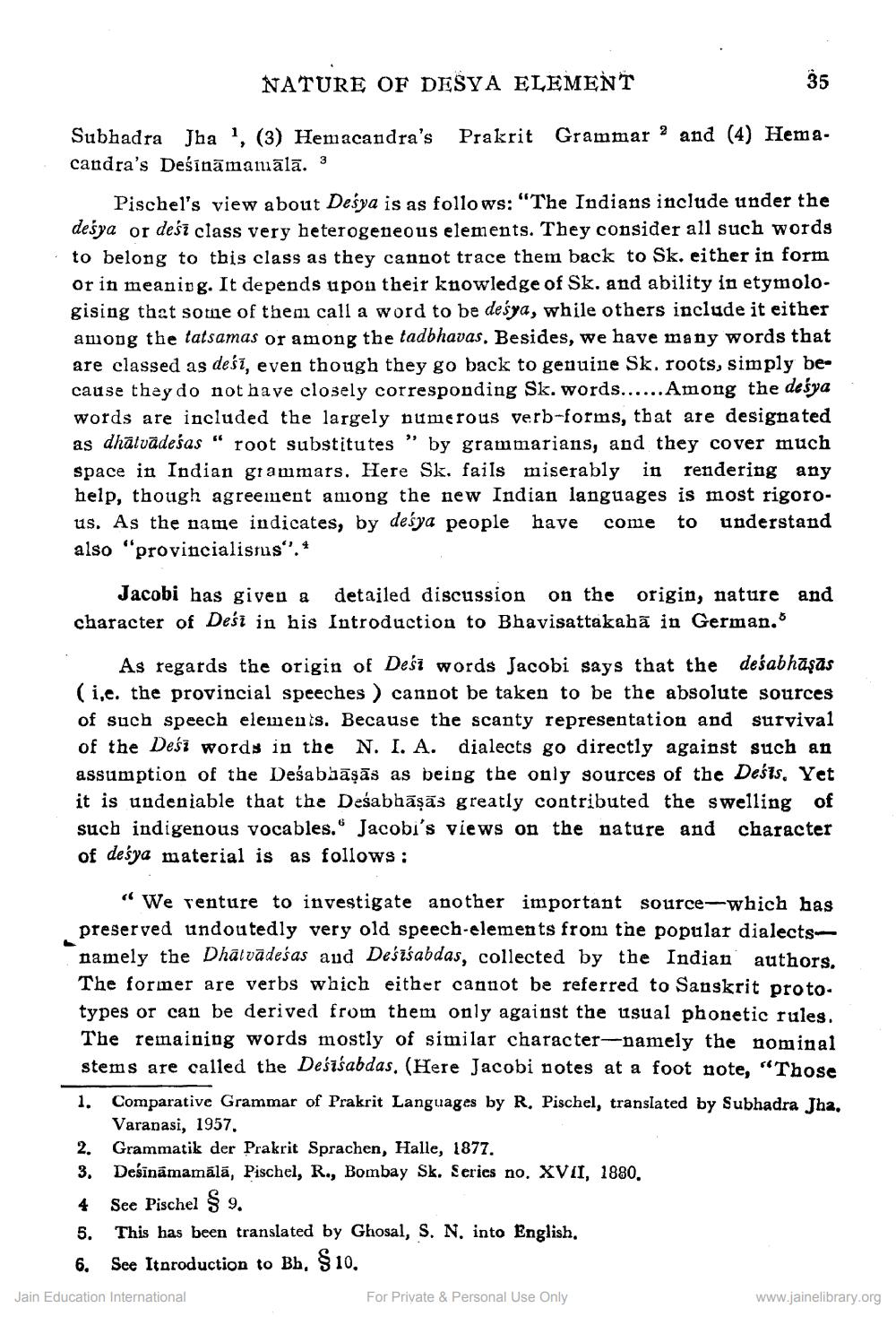________________
NATURE OF DESYA ELEMENT
35
Subhadra Jha 1, (3) Hemacandra's Prakrit Grammar 2 and (4) Hemacandra's Deśināmanāla. 3
Pischel's view about Deśya is as follows: "The Indians include under the desya or deśī class very heterogeneous elements. They consider all such words to belong to this class as they cannot trace them back to Sk. either in form or in meaning. It depends upon their knowledge of Sk. and ability in etymologising that some of them call a word to be desya, while others include it either among the tatsamas or among the tadbhavas. Besides, we have many words that
ed as desī, even though they go back to genuine Sk. roots, simply be cause they do not have closely corresponding Sk. words...... Among the desya words are included the largely numerous verb-forms, that are designated as dhālvādeśas " root substitutes ” by grammarians, and they cover much space in Indian giammars. Here Sk, fails miserably in rendering any help, though agreement among the new Indian languages is most rigorous. As the name indicates, by desya people have come to understand also "provincialistus''. 4
Jacobi has given a detailed discussion on the origin, nature and character of Deśī in his Introduction to Bhavisattakahā in German."
As regards the origin of Desi words Jacobi says that the deśabhāşās (i,e. the provincial speeches ) cannot be taken to be the absolute sources of such speech elements. Because the scanty representation and survival of the Deść words in the N. I. A. dialects go directly against such an assumption of the Deśabhāṣās as being the only sources of the Deśis, Yet it is undeniable that the Deśabhāṣās greatly contributed the swelling of such indigenous vocables. Jacobi's views on the nature and character of desya material is as follows:
"We venture to investigate another important source-which has preserved undou tedly very old speech-elements from the popular dialectsnamely the Dhalvādeśas and Deśaśabdas, collected by the Indian authors. The former are verbs which either cannot be referred to Sanskrit proto. types or can be derived from them only against the usual phonetic rules. The remaining words mostly of similar character-namely the nominal stems are called the Deśiśabdas. (Here Jacobi notes at a foot note, “Those 1. Comparative Grammar of Prakrit Languages by R. Pischel, translated by Subhadra Jha.
Varanasi, 1957. 2. Grammatik der Prakrit Sprachen, Halle, 1877. 3. Desīnāmamālā, Pischel, R., Bombay Sk. Series no. XVII, 1880. 4 See Pischel Ş9. 5. This has been translated by Ghosal, S. N. into English,
6. See Itproduction to Bb, $10. Jain Education International For Private & Personal Use Only
www.jainelibrary.org




